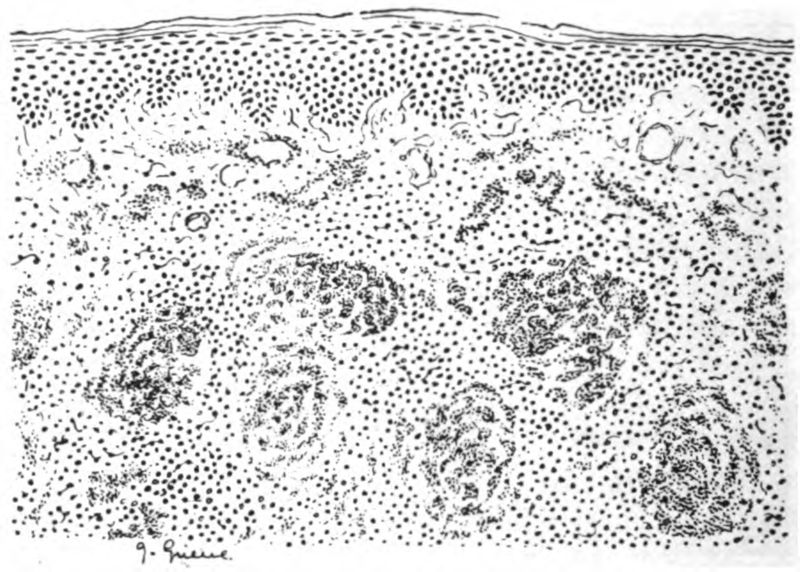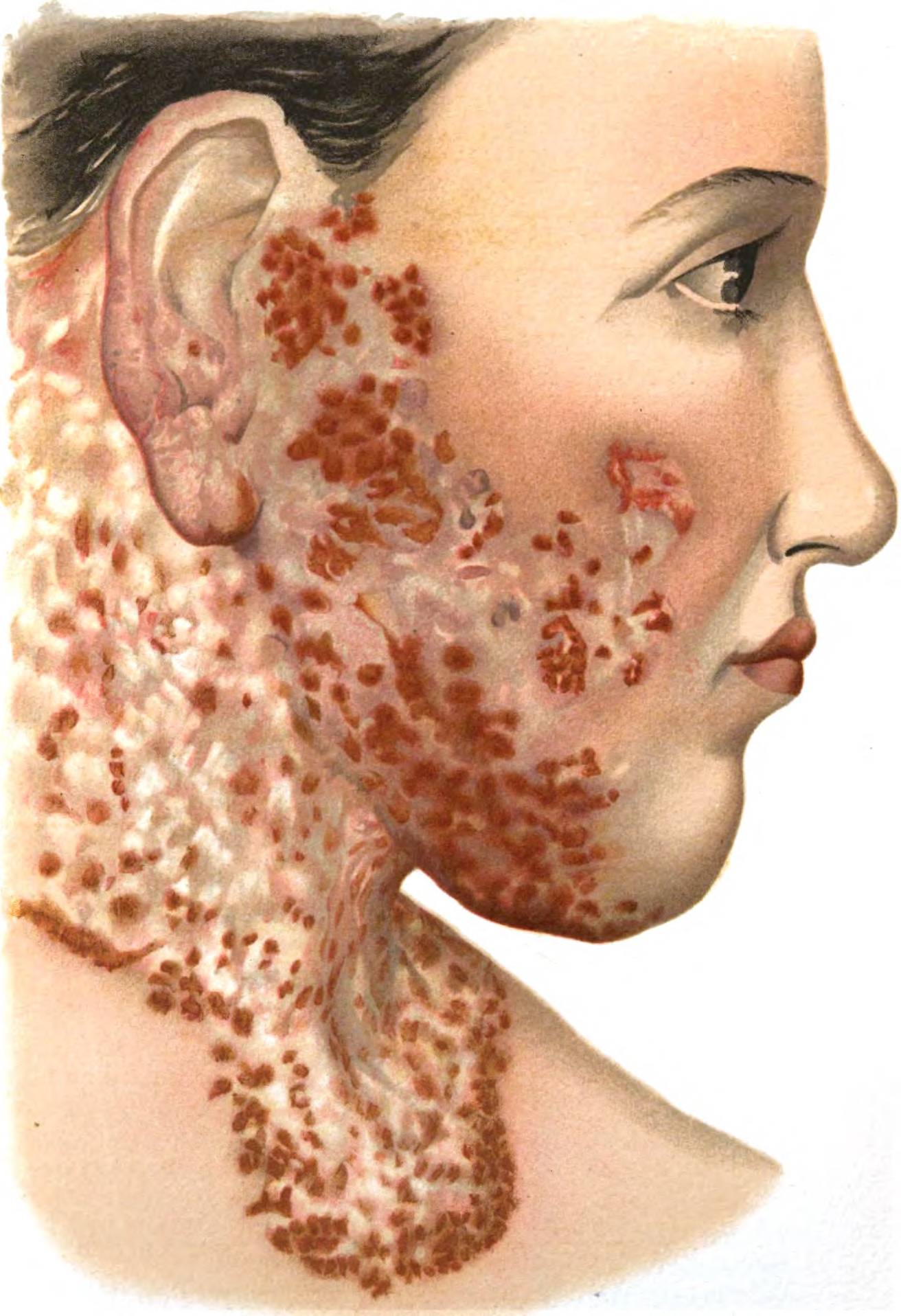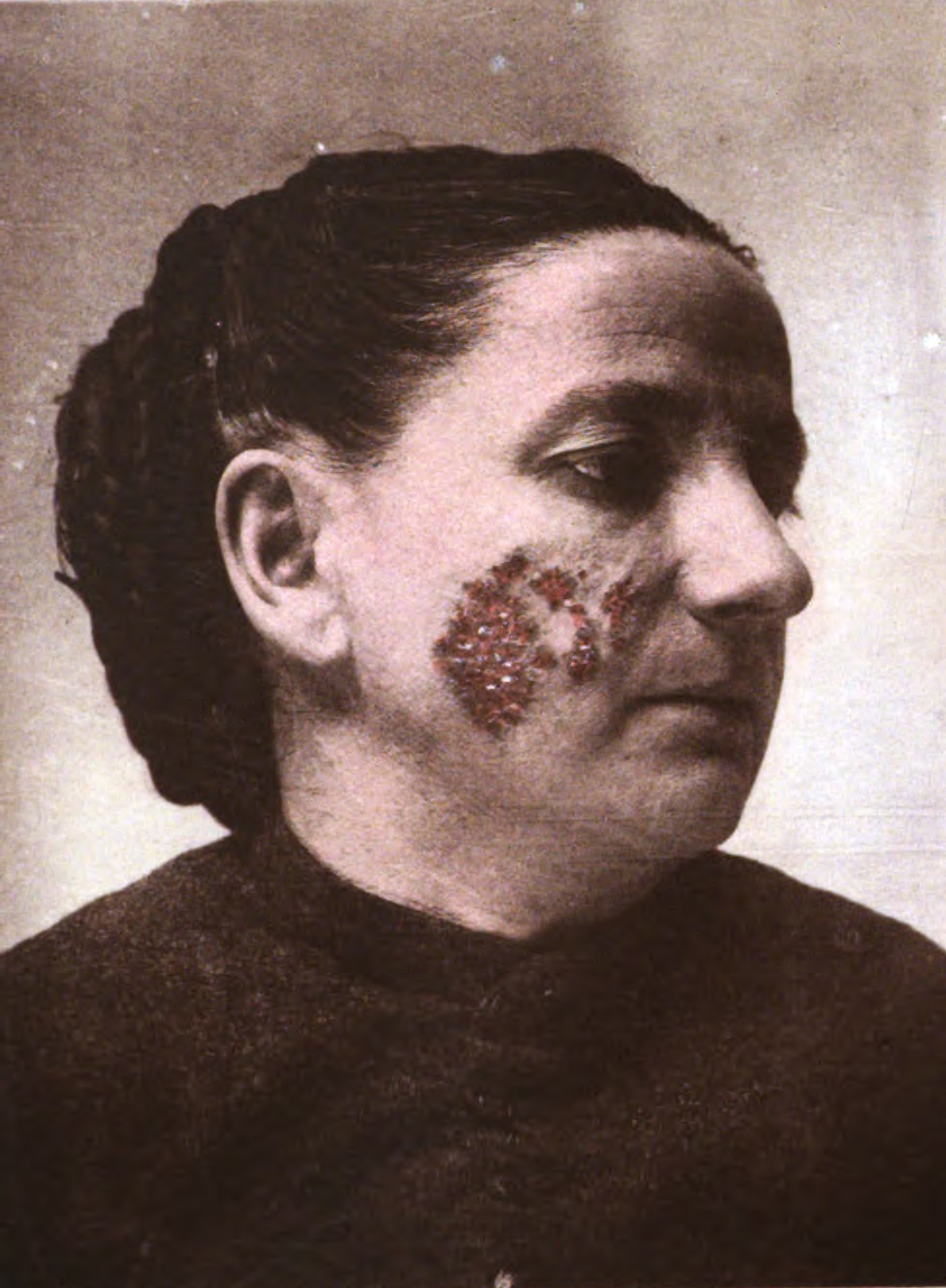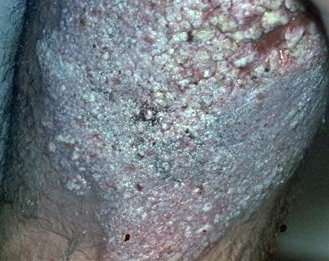Lupus vulgaris
|
WikiDoc Resources for Lupus vulgaris |
|
Articles |
|---|
|
Most recent articles on Lupus vulgaris Most cited articles on Lupus vulgaris |
|
Media |
|
Powerpoint slides on Lupus vulgaris |
|
Evidence Based Medicine |
|
Clinical Trials |
|
Ongoing Trials on Lupus vulgaris at Clinical Trials.gov Trial results on Lupus vulgaris Clinical Trials on Lupus vulgaris at Google
|
|
Guidelines / Policies / Govt |
|
US National Guidelines Clearinghouse on Lupus vulgaris NICE Guidance on Lupus vulgaris
|
|
Books |
|
News |
|
Commentary |
|
Definitions |
|
Patient Resources / Community |
|
Patient resources on Lupus vulgaris Discussion groups on Lupus vulgaris Patient Handouts on Lupus vulgaris Directions to Hospitals Treating Lupus vulgaris Risk calculators and risk factors for Lupus vulgaris
|
|
Healthcare Provider Resources |
|
Causes & Risk Factors for Lupus vulgaris |
|
Continuing Medical Education (CME) |
|
International |
|
|
|
Business |
|
Experimental / Informatics |
Editor-In-Chief: C. Michael Gibson, M.S., M.D. [1]; Associate Editor(s)-in-Chief: Aarti Narayan, M.B.B.S [2] Kiran Singh, M.D. [3]
Synonyms and keywords: Tuberculosis luposa
Overview
Lupus vulgaris[1] are painful cutaneous tuberculosis skin lesions with nodular appearance, most often on the face around nose, eyelids, lips, cheeks and ears.[2]:335 The lesions may ultimately develop into disfiguring skin ulcers if left untreated.
Historical Perspective
In the 19th century, the chronic and progressive nature of this disease was particularly marked: it remained active for ten years, twenty years, or even longer and, proved resistant to all treatment until the breakthrough by Niels Ryberg Finsen using a form of "concentrated light radiation" now known as Photobiomodulation which won him a Nobel Prize. Queen Alexandra of Great Britain, (1844–1925), consort to Edward the VII, as the inscription on the bronze statue of her at the London Hospital, notes, "Introduced to England the Finsen light cure for Lupus, and presented the first lamp to this hospital".
The term "lupus" to describe an ulcerative skin disease dates to the late thirteenth century, though it was not until the mid-nineteenth that two specific skin diseases were classified as Lupus erythematosus and Lupus vulgaris. The term "lupus" may derive from the rapacity and virulence of the disease; a 1590 work described it as "a malignant ulcer quickly consuming the neather parts; ... very hungry like unto a woolfe".[3]
Pathophysiology
- Lupus vulgaris often develops due to inadequately treated pre-existing tuberculosis. It may also develop at site of BCG vaccination. [4]
- It begins as painless reddish-brown nodules which slowly enlarge to form irregularly shaped red.
Diagnosis
Physical Examination
Skin
Extremity
-
Lupus vulgaris. Adapted from Dermatology Atlas.[5]
-
Lupus vulgaris. Adapted from Dermatology Atlas.[5]
-
Lupus vulgaris. Adapted from Dermatology Atlas.[5]
-
Lupus vulgaris. Adapted from Dermatology Atlas.[5]
-
Lupus vulgaris. Adapted from Dermatology Atlas.[5]
Microscopic Pathology

Histologically, it shows well-formed granulomas with necrotic centers in dermis.
Differentiating Lupus vulgaris from other Diseases
The condition should be distinguished from:
Complications
In long standing scarred lesion, squamous cell carcinoma can develop.
Diagnosis
Physical Examination



Laboratory Findings
Diascopy
On diascopy, it shows characteristic "apple-jelly" color.
Biopsy
Biopsy will reveal tuberculoid granuloma with few bacilli.
Treatment
Medical Therapy
A dermatologist or general physician usually administers combination therapy of drugs used for tuberculosis, such as Rifampicin, Isoniazid and Pyrazinamide (possibly with either streptomycin or ethambutol).
References
- ↑ Rapini, Ronald P.; Bolognia, Jean L.; Jorizzo, Joseph L. (2007). Dermatology: 2-Volume Set. St. Louis: Mosby. pp. Chapter 74. ISBN 1-4160-2999-0.
- ↑ James, William D.; Berger, Timothy G.; et al. (2006). Andrews' Diseases of the Skin: clinical Dermatology. Saunders Elsevier. ISBN 0-7216-2921-0.
- ↑ "Lupus", Oxford English Dictionary, online second edition. Accessed 2006
- ↑ 4.0 4.1 4.2 Dermatology - A colour handbook, 2nd ed. Manson Publishing. 2010. p. 216. ISBN 9781840765960.
- ↑ 5.0 5.1 5.2 5.3 5.4 "Dermatology Atlas".
![Lupus vulgaris. Adapted from Dermatology Atlas.[5]](/images/8/8f/Lupus_vulgaris01.jpg)
![Lupus vulgaris. Adapted from Dermatology Atlas.[5]](/images/6/6b/Lupus_vulgaris02.jpg)
![Lupus vulgaris. Adapted from Dermatology Atlas.[5]](/images/1/1e/Lupus_vulgaris03.jpg)
![Lupus vulgaris. Adapted from Dermatology Atlas.[5]](/images/d/d7/Lupus_vulgaris04.jpg)
![Lupus vulgaris. Adapted from Dermatology Atlas.[5]](/images/2/20/Lupus_vulgaris05.jpg)